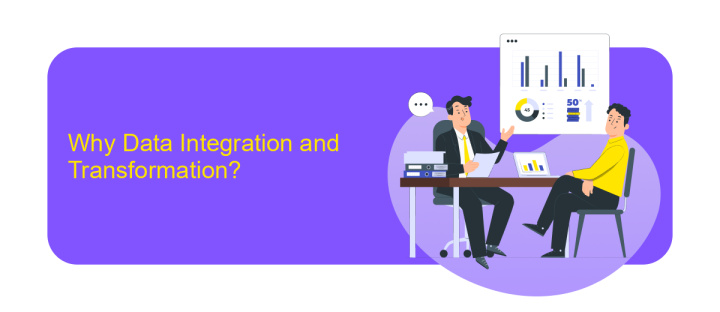Data Integration and Transformation Tools Ceph
Data integration and transformation are critical processes in managing and utilizing vast amounts of information effectively. Ceph, a highly scalable and open-source storage platform, offers robust solutions for these tasks. This article explores how Ceph can be leveraged for seamless data integration and transformation, highlighting its key features, benefits, and practical applications in modern data-driven environments.
Introduction
In today's data-driven world, the ability to efficiently manage and transform data is crucial for businesses to stay competitive. Data integration and transformation tools play a pivotal role in consolidating disparate data sources, ensuring data consistency, and enabling seamless data analysis. One such powerful tool is Ceph, an open-source storage platform designed to handle large-scale data management tasks.
- Scalable and flexible architecture
- High availability and fault tolerance
- Support for various data types and workloads
- Integration with multiple data processing frameworks
Ceph's robust features make it an ideal choice for organizations looking to streamline their data integration and transformation processes. By leveraging Ceph, businesses can achieve greater efficiency, reduce operational costs, and gain deeper insights from their data. This introduction provides an overview of the key benefits and capabilities of Ceph, setting the stage for a more detailed exploration of its functionalities in the subsequent sections.
Why Data Integration and Transformation?

Data integration and transformation are critical processes in today's data-driven world. They enable organizations to consolidate data from multiple sources into a unified view, facilitating better decision-making and operational efficiency. By integrating data, businesses can eliminate silos, ensure data consistency, and provide a comprehensive perspective that supports strategic initiatives. Transformation processes further enhance the value of data by converting it into formats that are more suitable for analysis, reporting, and other business needs.
Furthermore, leveraging tools like ApiX-Drive can significantly streamline the data integration and transformation process. ApiX-Drive offers an intuitive platform for setting up integrations between various applications and services without requiring extensive technical expertise. This not only saves time and resources but also ensures that data flows seamlessly across systems, enhancing overall productivity. By automating these processes, organizations can focus on deriving insights from their data rather than being bogged down by the complexities of data management.
Ceph for Data Integration and Transformation

Ceph, an open-source storage platform, has become a vital tool for data integration and transformation. Its highly scalable and distributed architecture allows seamless handling of large datasets, making it ideal for modern data-driven applications. Ceph's object, block, and file storage capabilities enable efficient data management and support diverse data formats, which is crucial for integration and transformation processes.
- Scalable Storage: Ceph can scale horizontally, accommodating growing data volumes without compromising performance.
- Data Redundancy: It ensures data reliability through replication and erasure coding, minimizing data loss risks.
- Unified Storage: Ceph supports object, block, and file storage, providing a versatile solution for various data types.
- Automation: Integration with automation tools simplifies data transformation workflows, enhancing efficiency.
- Flexibility: It offers compatibility with multiple platforms and programming languages, facilitating seamless integration.
By leveraging Ceph for data integration and transformation, organizations can achieve robust, scalable, and efficient data management solutions. Its flexibility and support for diverse storage needs make it a powerful ally in the evolving landscape of big data and analytics. As businesses continue to generate vast amounts of data, Ceph's capabilities ensure that they can integrate, transform, and utilize this data effectively.
Benefits of Using Ceph for Data Integration and Transformation

Ceph is a highly scalable and distributed storage system that offers numerous advantages for data integration and transformation tasks. Its open-source nature and robust architecture make it an ideal choice for organizations seeking a reliable and flexible solution for managing large volumes of data.
One of the key benefits of using Ceph is its ability to seamlessly integrate with various data sources and platforms. This ensures that data from different systems can be consolidated and transformed efficiently, enabling better decision-making and streamlined operations.
- Scalability: Ceph can handle petabytes of data, making it suitable for organizations of all sizes.
- Fault tolerance: Its distributed nature ensures high availability and data redundancy.
- Flexibility: Ceph supports multiple storage interfaces, including block, object, and file storage.
- Cost-effectiveness: As an open-source solution, Ceph reduces the need for expensive proprietary software.
In conclusion, Ceph provides a robust and versatile platform for data integration and transformation. Its scalability, fault tolerance, and cost-effectiveness make it a valuable asset for organizations looking to optimize their data management processes.


Conclusion
In conclusion, the integration and transformation of data using Ceph present a robust solution for handling large-scale data storage and management. Ceph's distributed architecture ensures high availability and fault tolerance, making it a reliable choice for enterprises that require scalable and efficient data solutions. Its compatibility with various data formats and systems further enhances its utility, allowing seamless integration into existing IT infrastructures.
For organizations looking to streamline their data workflows, tools like ApiX-Drive can significantly simplify the process of integrating Ceph with other services. ApiX-Drive offers an intuitive interface and a variety of pre-built connectors, facilitating quick and easy setup of automated data transfers. By leveraging such tools, businesses can reduce the complexity of data management, improve operational efficiency, and ensure that their data is always up-to-date and accessible across all platforms.
FAQ
What is Ceph and how does it work?
How does Ceph handle data redundancy and fault tolerance?
Can Ceph be integrated with existing data systems?
What are the common use cases for Ceph?
How can I automate and streamline the integration process of Ceph with other tools?
Apix-Drive will help optimize business processes, save you from a lot of routine tasks and unnecessary costs for automation, attracting additional specialists. Try setting up a free test connection with ApiX-Drive and see for yourself. Now you have to think about where to invest the freed time and money!

